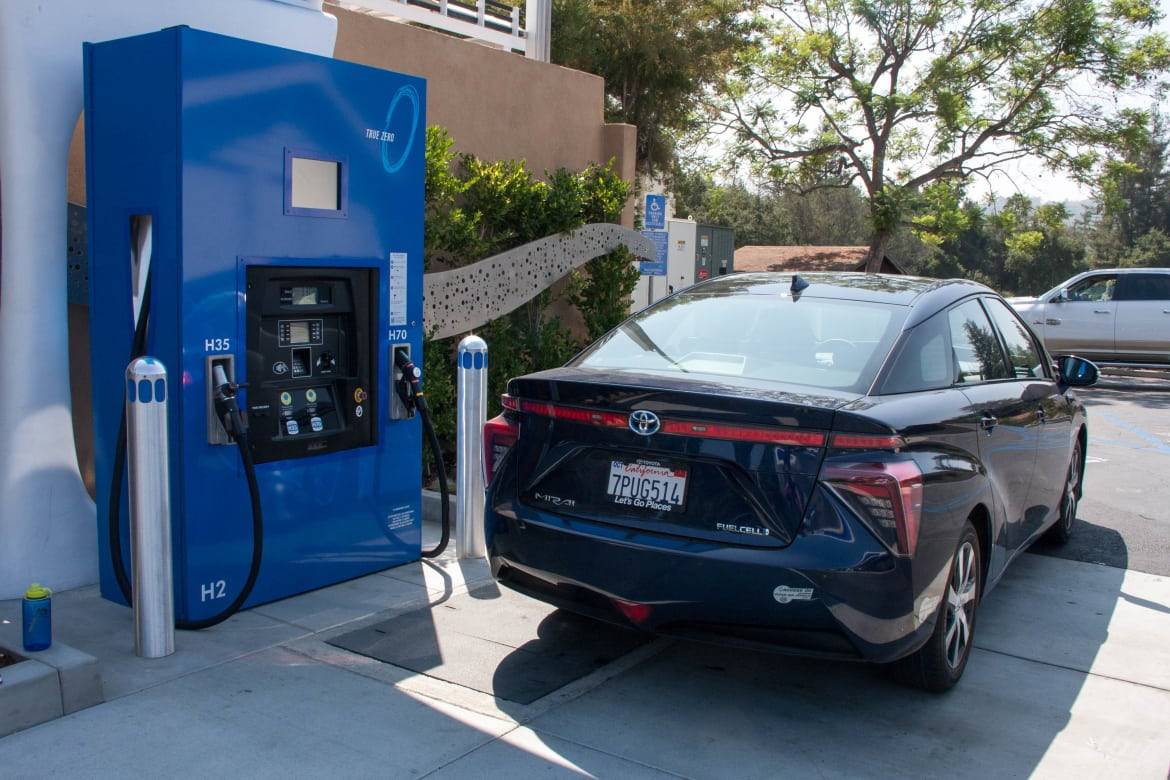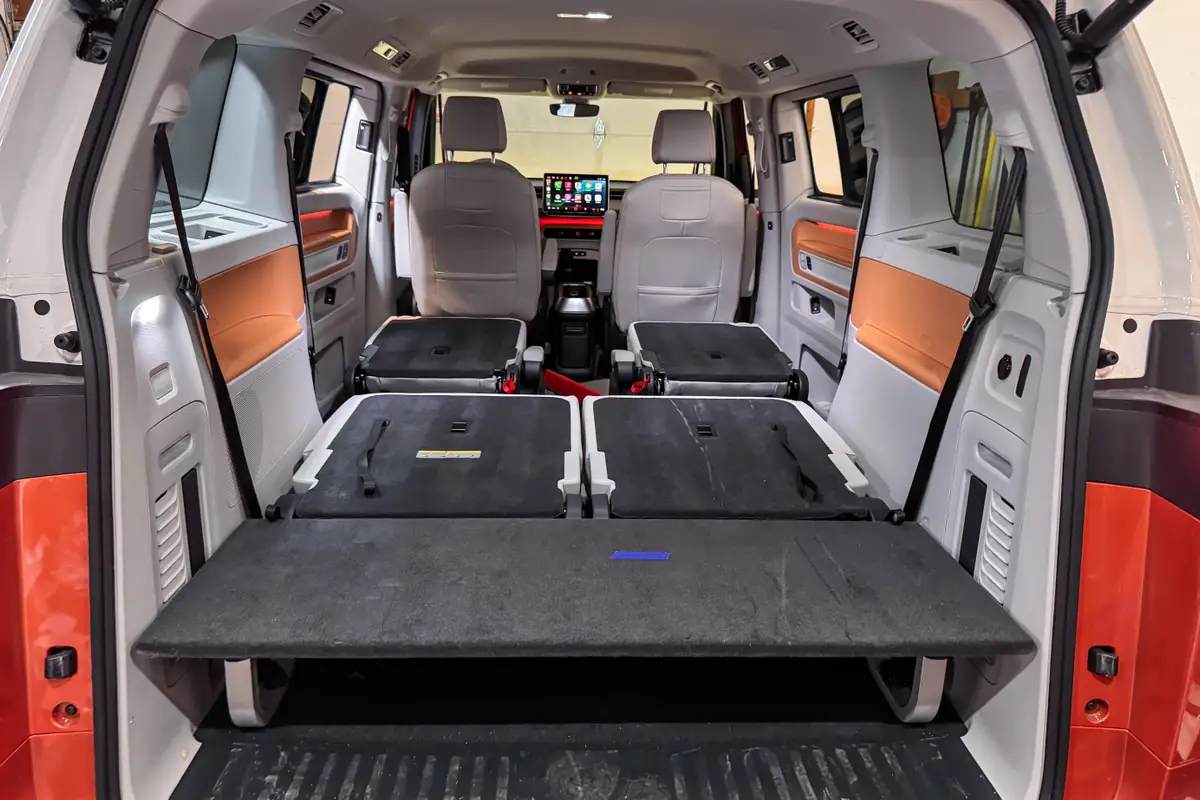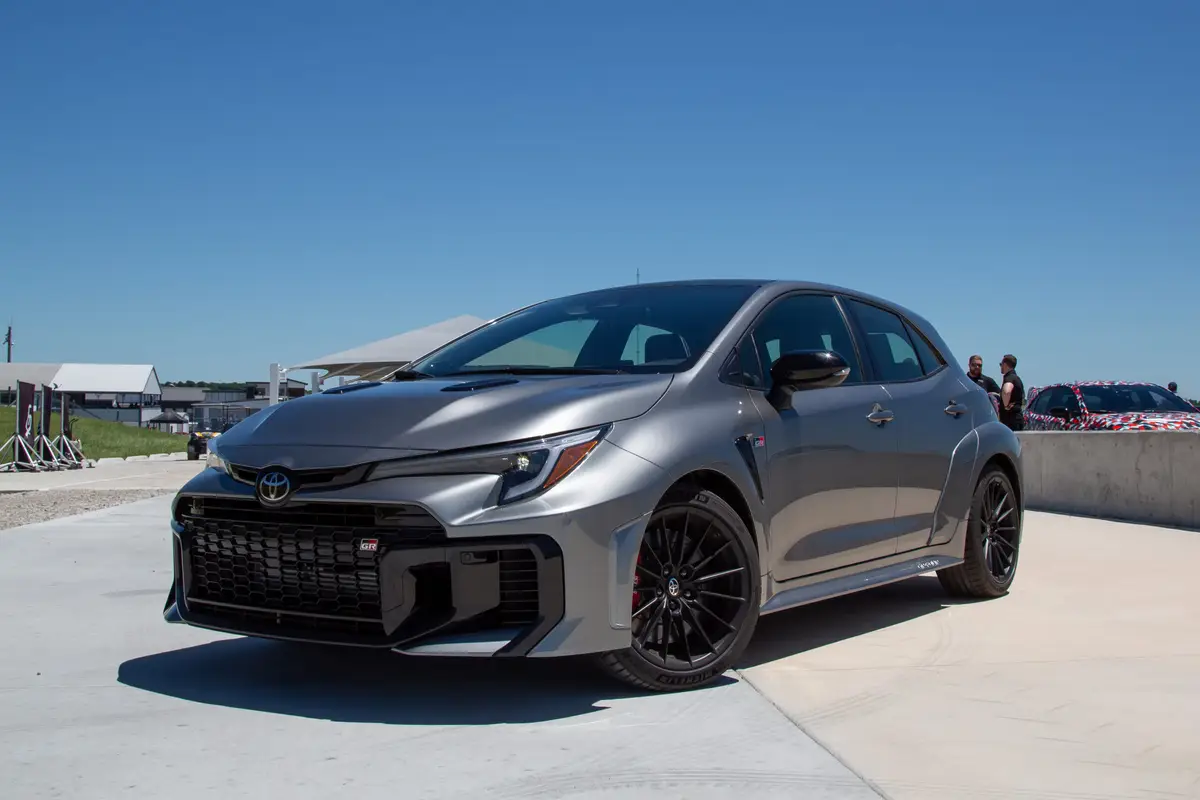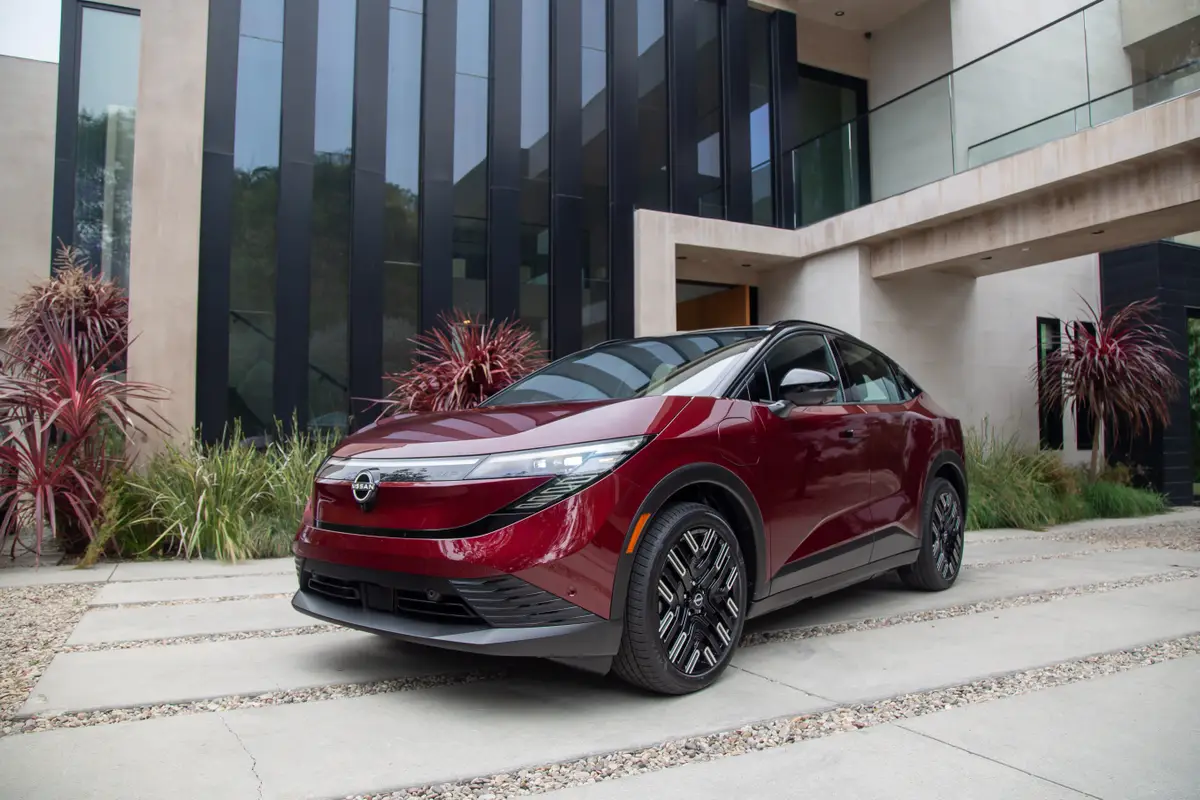What Are Hydrogen Cars?

Cars that run on hydrogen are called fuel-cell vehicles. They are electric vehicles that get their energy from a fuel-cell stack rather than a battery pack.
Related: 2021 Toyota Mirai: 3 Things to Know
In current automotive uses, a fuel-cell stack is a suitcase-sized box that’s fed a mixture of hydrogen held in an onboard tank and oxygen from the air to create electricity through a chemical reaction. According to the Environmental and Energy Study Institute, “A fuel cell is, in a way, a battery that can be refueled (as opposed to recharged).” In today’s cars, that refueling can be accomplished in only about five minutes through a process similar to refueling a gas-only vehicle, whereas recharging a battery would take far longer.
A Model of Clean Energy
Another beauty of the fuel-cell technology is that its only emissions are water and heat. Furthermore, the hydrogen that fuels it is the most abundant element on earth. The downside, however, is that hydrogen doesn’t occur naturally; it has to be separated from something else.
That “something else” can be water — quite abundant itself — which is made up of two hydrogen atoms and one oxygen atom. Unfortunately, the common way to separate that marriage is by shooting electricity through the water, and that requires generating electricity first — though with wind, solar and hydro power, it can be a very clean process. But there are other ways to get hydrogen as well, many of which are being studied and improved upon.
Although fuel-cell vehicles have been commercially available for a while, the EPA lists only three for the 2021 model year: the Honda Clarity, Hyundai Nexo, and Toyota Mirai. That number will shrink, as Honda announced it’s canceling the Clarity after model-year 2021. All have ranges of about 350-400 miles per fill-up, roughly the same as gas-powered cars.
Past and Future of the Fuel Cell
Although fuel-cell vehicles are rather new, the fuel-cell stack that powers them isn’t. History dates the invention back to 1839, with credit going to Welsh scientist William Robert Grove. However, fuel cells essentially took a long break until the 1960s, when they were used by NASA to generate power for satellites and space capsules.
Currently, there aren’t many hydrogen fueling stations, and most are in California centered around Los Angeles and San Francisco. Find one here. Since hydrogen is often considered the fuel of the future, more will undoubtedly pop up across the country over time. And, as a fuel cell can be scaled down to be quite small or scaled up to be quite powerful, it’s likely that more than just cars will be powered by them in the future.
More From Cars.com:
- What Are the Most Fuel-Efficient Cars for 2021?
- Research the Hyundai Nexo
- Research the Toyota Mirai
- Research the Honda Clarity
Cars.com’s Editorial department is your source for automotive news and reviews. In line with Cars.com’s long-standing ethics policy, editors and reviewers don’t accept gifts or free trips from automakers. The Editorial department is independent of Cars.com’s advertising, sales and sponsored content departments.
Featured stories




